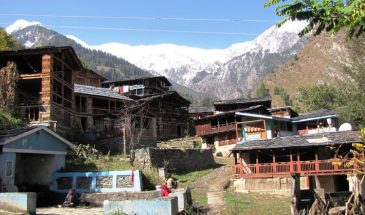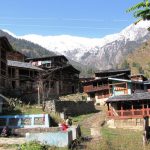- Overview
- Itinerary
- Includes & Excludes
- Gallery
Day 1: Mcleodganj to Kareri village (1800mts) 13 kms.
This 13 km trek is smooth and enjoyable. It passes through the DalLake nestled in most natural scenic grandeur and surrounding by thick deodars,junipers, rhododendrons and thin variety of oaks. The road to the left of the lake turns to Satobari hereafter, a wide stony trail descends through a thick forest.
This trail meets a hanging wooden bridge over the Gaj River at Ghera. Frome here, there is steady climb of about 3km., which later joins a mule track allowing an easy walk up to Kareri. Thick pine forest makes the whole trek very refreshing and picturesque. Dhauladhar range looks majestic from here. One can view Gag and Bhimghasutri passes from a very close distance.
Day 2: Kareri Village to Kareri Lake (3200mts.) 13 kms.
Kareri Lake is at a low altitude and is an easier trek. It is frequented mostly by Gujjars and Gaddis from the nearby villages because of extensive pasturelands. Clusters of dense conifers and different kinds of perennial flowers are a rare treat offered by this place.
Day 3: Kareri Lake to Minkiani Got or Naggar over Minkiani Pass (4250mts.)
Three hours of steady and stiff climbing over snowy and steep rocks takes one to Minkiani pass. The route is clear in the beginning and ascends gradually but become steep half way up to the pass requiring a climb over hard snow and boulders.
Minkiani pass is at a small saddle with many ‘Trisuls’ where prayers for safe crossing are offered to Shiva. The route to the other side of the pass descends through moraines and one has to hop up from boulder to boulder.
The trek terminates at Minkiani Gote (3500m) where there are few rock caves and lovely camping ground. In all, it take 6 to 7 hours to reach this camping place from Kareri Lake.
Day 4: Minkiani Got to Lamdal Lake (3900m) and back to Minkiani Got.
The route from here to Lamdal is not very difficult. One must walk with a slow pace initially. It takes only two hours to reach at Lamdal Lake. This lake is L shaped and is spread over 1.5km. it is the biggest and deepest lake in the Dhauladhar range. This lake is considered as an abode of lord Shiva and hence sacred.
Day 5: Minkiani Got to Drakund (10km) 5 to 6 hours.
From Minkiani got to Drakund is further walk of ten kilometres. The trek descends to the valley floor along Lamdal stream; the route is clear and at certain places involves crossing over streams.
Day 6: Drakund to Dunali and to Bharmour (5 to 6 hrs)
Drakund onward to Dunali is a bridle path. The trek passes through beautiful villages. It takes 3 to 4 hrs at an easy pace to reach at Dunali. Dunali is a bus head to board busses to Bharmour (40Km) and Chamba (26Km).
(Bharmour, anciently known as Brahmpura, was the ancient capital of Chamba. Bharmour is also popular because Chaurasi(84) ancient temples).
Day 7:- After breakfast jeep to Hudsar (2320mts) and then trek to Dhancho (3355mts). Over night stay in tents.
(Bharmour to Hudsar is 13km by jeep and 6km trek to Dhancho. Dhancho is the base camp of Manimahesh Lake trek. Manimahesh Lake is 7km from Dhancho).
Day 8 :- Dhancho to Manimahesh Lake (4170mts). Camping at Manimahesh Lake.
Manimahesh Lake is a small glacial lake situated below a small ridge just opposite the Chamba Kailash Peak and is perhaps the highest lake in the hierarchy of sacred lakes in the Dhauladhar and Pir-Panjal ranges. Manimahesh lake is situated at 27kms from Bharmour.
Day 9 :- Manimahesh Lake to Hudsar 13kms. (2320mts) by walking and from Hudsar to Bharmour by jeep. Over night stay in Hotel.
Day 10:- Departure from Bharmour.
Includes :
- Transport cost for private departures
- All vegetarian meals beginning with breakfast
- Porter/mules for client baggage (one bag per client not weighing more than 15 kgs)
- Camping equipment
- Professional guide
Not Included :
- Any meals/services not mentioned above
- Any charges for video cameras, still cameras, etc.
Alcohol, soft drinks, beverages, etc. - Personal expenses like tips, telephone calls, laundry, etc.
- Any costs arising out of unforeseen circumstances like landslides, road blocks, bad weather, etc.
- Insurance









